Spinal Surgery in New York
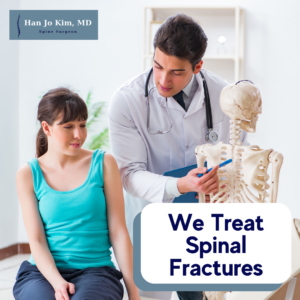
Spinal Surgery in New York is extremely complex, and Dr. Han Jo Kim prides himself on providing a comprehensive patient care approach when determining treatment options. He believes in having a dynamic approach to surgery and aims to provide the best surgical treatment for each patient based on an individual’s needs, expectations, and lifestyle. He works to help patients explore all other surgery alternatives before recommending patients for surgery.
Our Services
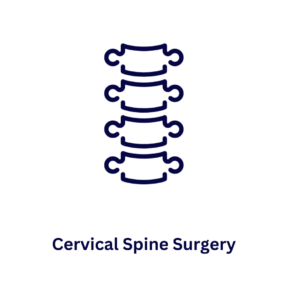
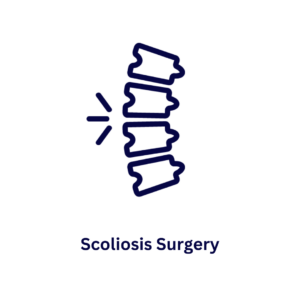
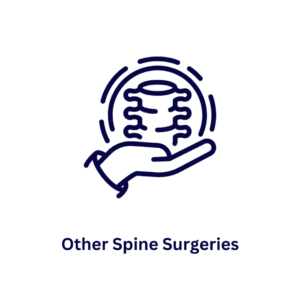
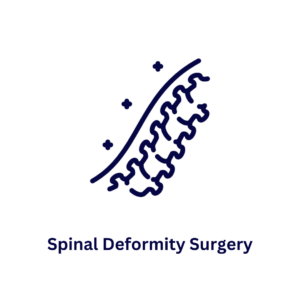
See Our Latest Success Story
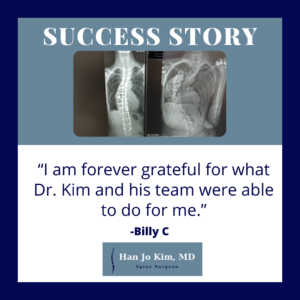
What Is Spinal Osteotomy?
Spinal osteotomy is a surgical procedure aiming to relieve pressure on the spinal cord or nerve roots caused by severe scoliosis, degenerative disc disease, or other spine abnormalities. During this procedure, bone from the affected spine area is cut and repositioned to either lengthen or shorten it. This can help to restore proper alignment and reduce compression on the nerves. It’s best to contact Dr. Han Jo Kim, a Spinal Surgery in New York, for more information on how to treat your Spinal osteotomy.
Different Types Of Spinal Osteotomy

There are different types of spinal osteotomy procedures depending on your specific condition and needs. The most common type involves removing a wedge-shaped part of one vertebrae and then reattaching it in a new position once the correct alignment has been restored. Another method involves cutting both sides of vertebrae to reduce its size, then fusing it to a neighboring vertebra to stabilize the spine.
Before undergoing spinal osteotomy surgery, your doctor will work with you to create a customized treatment plan based on your specific condition and goals. This may involve additional therapies or medications designed to help relieve any discomfort caused by your condition while also helping to prevent further damage. The surgery itself is typically performed under general anesthesia and takes around two hours to complete. While most people can recover fully within four months of their surgery, it’s important to follow all post-operative care instructions closely in order to ensure a healthy recovery.
If you have severe scoliosis or degenerative disc disease that is causing compression of the nerves in your spine, talk to your doctor about whether spinal osteotomy surgery may be a good treatment option for you. With proper care and rehabilitation following your surgery, you should be able to return to all of the activities you enjoy in no time at all.
Spinal osteotomy is a surgical procedure that can relieve pressure on the spinal cord or nerve roots caused by severe scoliosis, degenerative disc disease, or other spine abnormalities. It involves removing a wedge-shaped part of one vertebra and then reattaching it in a new position once the correct alignment has been restored. There are different types of spinal osteotomy procedures depending on your specific condition and needs. Before undergoing this surgery, your doctor will work with you to create a customized treatment plan that may include additional therapies or medications in order to help relieve any discomfort caused by your condition and prevent further damage.
Surgery itself is typically performed under general anesthesia and takes around two hours to complete. While most people can recover fully within four months of their surgery, it’s important to follow all post-operative care instructions closely to ensure a healthy recovery. If you have severe scoliosis or degenerative disc disease that is causing compression on the nerves in your spine, talk to your doctor about whether spinal osteotomy surgery may be a good treatment option for you. With proper care and rehabilitation following your surgery, you should be able to return to all of the activities you enjoy in no time at all.
How To Cope With Spinal Osteotomy Pain
Coping with spinal osteotomy pain can be difficult, but with proper care and rehabilitation, you should be able to recover fully and return to all of the activities you enjoy. Here are a few tips to help you manage your pain:
- Talk to your doctor about your pain medication options and follow their instructions closely.
- Ice the affected area frequently to help reduce inflammation and swelling.
- Apply heat to the area as needed to help relieve stiffness and discomfort.
- Maintain good posture and alignment when standing, sitting, or walking.
- Perform stretching and strengthening exercises as directed by your doctor or physical therapist.
- Take it easy and avoid strenuous activities until your doctor clears you.
With proper care and rehabilitation, you should be able to manage your spinal osteotomy pain and make a full recovery.
Contact Us For Spinal Surgery in New York
Suppose you are dealing with severe scoliosis or degenerative disc disease that is causing compression of the nerves in your spine. In that case, Spinal osteotomy surgery may be a good treatment option for you. It’s best to contact Dr. Han Jo Kim Spinal Surgery in New York for more information how to treat your Spinal osteotomy.
Contact Us For Spinal Surgery in New York
What Conditions Need Back Surgery?

Back surgery is a procedure where the surgeon makes an incision in the back, removes damaged tissue, repairs the spine, or replaces joints. The patient is given anesthesia so that they are fully asleep and feel no pain during back surgery. If you need back surgery contact Dr. Han Jo Kim Spinal Surgery in New York today! Contact us today to learn more about how we can help!
There Are Three Main Types of Back Surgeries:
- Decompression is used when there is a lot of pressure on the spine from a herniated disc.
- Fusions that join two or more vertebrae together with instruments and/or bone grafts to stop them from moving.
- Artificial disc replacement is used when there is damage in the discs between the vertebrae.
Back surgery can be helpful for people who have cancer, spondylolisthesis, osteoporosis-related fractures, scoliosis, and degenerative disc disease. People who are suffering from the following conditions may need back surgery:
- Spinal stenosis is a narrowing of the opening where nerves go through, leaving the spinal cord, often causing pain in the legs and buttocks.
- Herniated discs – occur when the outer layer of shock-absorbing gel inside a disc tear or pops out, causing pain and stiffness.
- Scoliosis is an abnormal curvature in your spine and can cause severe back pain, numbness and tingling in your legs and feet, and shortness of breath.
- Spondylolisthesis is a condition where one vertebra slips forward over the other, causing pain, numbness, and tingling in your legs and feet.
- Osteoporosis-related fractures occur after age 50 because of fragile bones. Back surgery could be necessary if the fractures are severe and there is nerve damage.
- Disc disease occurs in the discs between your vertebrae, causing them to wear down, making it difficult to move your back, and causing pain.
Dr. Han Jo Kim
Back surgery can be helpful for people who have been diagnosed with one of these conditions but will not cure or relieve all pain. If you think that you may need back surgery, be sure to talk with your doctor and get a full medical history done. Before the surgery, people should make sure they eat healthy foods and exercise regularly. They should also stop smoking as it can lead to complications during back surgery. Depending on the type of back surgery a person needs, their doctor will determine how long they need to rest before going back to work or resume daily activities.
Spinal Surgery in New York
People who need back surgery should not lift anything more than a few pounds for a couple of weeks. Also, avoid driving until their doctor is permitted. They can walk as soon as they feel pain has gone away, but they should use a cane or walker if needed.
There are some things people can do to lower the risk of back surgery, including:
- Doing exercises to strengthen and stretch their back.
- Healthy weight
- Having a balanced diet
- Exercise regularly
- Avoid smoking and drinking too much alcohol.
If you’re worried that you or someone you love needs back surgery, then talk to your doctor about what conditions need back surgery. Back pain is common, but that doesn’t mean you have to suffer from it.
What Conditions Require Back Surgery?
For many people, it’s hard to even think about the possibility of needing back surgery. This is especially true for those who may not have had any previous injuries or issues with their backs. While nobody wants to need an operation, sometimes there are valid reasons that necessitate having back surgery. People are often misdiagnosed by their doctors, making the need for back surgery even more frustrating. If you have problems with your back that you suspect may require surgery, ask your doctor to be honest about all of your options before moving forward.
If you genuinely need back surgery, several different types can help correct your condition. Some of these surgeries may include:
- The back surgery you need will depend on the problem in your back. This will be determined by your doctor after examining you and reviewing your medical history.
- Discectomy – which involves removing a herniated disc from the spine. This is also known as a microdiscectomy.
- Spinal fusion – which usually involves inserting a bone graft into the spine to create a union between two or more vertebrae.
- Different Types of Fusion are instrumented with plates or screws to ensure that the bone graft fuses properly. This type of back surgery is known as a posterior lumbar interbody fusion.
Dr. Han Jo Kim – Spinal Surgery in New York
The type of back surgery needed will depend on your medical condition. Make sure you ask your doctor if back surgery is necessary before deciding what to do. Make sure you eat a healthy diet and get regular exercise, which can also help to reduce pain in your back. If you need back surgery contact Dr. Han Jo Kim a Spinal Surgery in New York today! Contact us today to learn more about how we can help!
How Do You Treat a Fractured Vertebrae?
A fractured vertebra occurs when one or more bones in the spine break. Spinal fractures can vary in severity, therefore varying in treatment. More serious spine fractures that result from high-energy trauma can require emergency treatment. Vertebrae fractures can also result from a lower-impact event, such as a minor fall, if bone insufficiency occurs. Our Spinal Surgery in New York can recommend the proper course of action no matter how you fractured a vertebra. Dr. Han Jo Kim treats various back and spine injuries with surgical and nonsurgical remedies.
Causes of a Fractured Vertebra
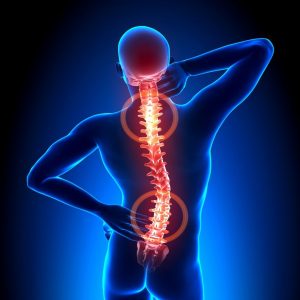
Most spinal fractures occur in the thoracic spine in the mid-back, the lumbar spine at the lower back, or the thoracolumbar junction, which connects the two. Fractures of these parts may result from high-energy trauma that occurred from the following:
- Car or motorcycle accident
- Fall from a significant height
- Sports accident
- Violent act
Many times people who experience high-energy trauma have additional injuries along with a fractured vertebra. The spinal cord and its nerves can also be affected. Spinal fractures can also be a result of bone insufficiency. People with underlying conditions, such as osteoporosis or tumors, can fracture a vertebra even during low-impact events, such as reaching, twisting, or falling.
Flexion Fracture Pattern
A flexion fracture pattern can consist of either a compression fracture or an axial burst fracture. A compression fracture occurs when the front of the vertebrae breaks loose and loses height, but the back part does not. Compression fractures occur most in patients with osteoporosis. An axial burst fracture occurs when the vertebrae loses height on the front and back sides. It is often caused by landing on your feet from a significant height.
Extension Fracture Pattern
A flexion/distraction fracture is a type of extension fracture pattern. In a flexion/distraction fracture, the vertebrae becomes pulled apart. This unstable fracture can result from a collision where the upper body is thrown forward, and the pelvis is stabilized.
Rotation Fracture Pattern
A transverse process fracture and a fracture-dislocation are two rotation fracture patterns. A transverse process fracture is a rare fracture that results from rotation or extreme sideways bending. A fracture-dislocation is an unstable injury where a vertebra moves off an adjacent vertebra. A fracture-dislocation can result in severe spinal cord compression.
Symptoms of a Fractured Vertebra
A fracture of the spine results in moderate to severe pain. If the spinal cord or the surrounding nerves are involved, bowel or bladder dysfunction can accompany. Some specific symptoms of a vertebra fracture that our Spinal Surgery in New York can address includes:
- Sudden onset of back pain
- Movement makes the pain worse
- Lying on one’s back makes the pain less intense
- Limited mobility of the spine
- Height loss
- Deformity and disability
Examination of the Spine
Patients who knowingly fracture any part of the spine should seek emergency treatment. The doctor will conduct a thorough evaluation of your injury at the emergency room. They can order imaging tests such as x-rays, CT scans, and MRI scans to examine the severity of the fracture. After determining the fracture pattern and its seriousness, the doctor will then recommend a treatment course.
Treatment of a Fractured Vertebra
Treatment for a spinal fracture depends on if there are other injuries, the particular fracture pattern, and whether there is a neurological injury. If a fracture is on the less severe side, the fracture can be treated with bracing for six to 12 weeks. Physical therapy and rehabilitation after bracing can help avoid post-injury problems.
Spinal Surgery in New York
Surgery with our Spinal Surgery in New York can be recommended if the fracture includes the following:
- Multiple bone fragments
- Severe loss of body height
- Excessive forward bending or angulation at the injury site
- Significant nerve injury
- Ligament damage making the spine unstable
Surgery can be performed through an anterior, lateral, or posterior approach, depending on the fracture pattern. Specialized instruments are used during the surgery. Metal screws, rods, and cages are also used to stabilize the spine. The ultimate goal of surgery is to do the following:
- Return the bones to their proper position
- Stabilize the fracture
- Relieve pressure the spinal cord and nerves
- Enhance early movement
Contact Spinal Surgery in New York
A fractured vertebra should not be taken lightly and should receive the best care from a qualified specialist. Consider our team if you have recently experienced fractured vertebrae and require a Spinal Surgery in New York to perform treatment. Dr. Han Jo Kim can treat various spinal issues and injuries through surgery. Contact us today if you are interested in meeting with our spine surgeon and discussing surgical options.
Unlocking a Pain-Free Life: Dr. Han Jo Kim’s Spinal Surgery in New York
Welcome to the forefront of spinal care at Dr. Han Jo Kim’s Spinal Surgery in New York. If you’ve been wrestling with spinal issues, this article is your guide to understanding the unparalleled care, expertise, and advanced treatments offered by one of the top spine surgeons in the field. Discover the transformative potential of Dr. Han Jo Kim’s approach to spinal care. From cervical spine surgeries to personalized treatment plans, learn why choosing the top spine surgeon can redefine your journey to a pain-free life.
What Defines Dr. Han Jo Kim’s Spinal Surgery?
Dive into the world of spinal expertise. What sets Dr. Han Jo Kim’s Spinal Surgery apart in addressing both common and complex spinal disorders and deformities? How does this advanced technique ensure a quicker recovery, making it a preferred choice for many patients? Delve into the concept of a comprehensive spine hospital. What advantages does this world-class facility offer for the evaluation and treatment of a spectrum of spinal conditions?
The Expertise of Dr. Han Jo Kim and His Team
- Board-Certified Excellence: Assurance of Quality Care Understand the significance of a board-certified spine surgeon. How does Dr. Han Jo Kim’s certification ensure a level of expertise that patients can trust?
- Collaborative Approach: A Team of Doctors Working for You Discover the power of collaboration in spinal care. How does Dr. Han Jo Kim’s team of doctors ensure a comprehensive and effective treatment plan tailored to your unique needs?
- Advanced Imaging for Precise Diagnosis Uncover the role of imaging in spinal diagnosis. How does advanced imaging contribute to a precise and accurate understanding of spinal conditions?
Personalized Care Tailored to Your Needs
- Personalized Treatment Plans: Your Roadmap to Recovery Explore the concept of personalized treatment plans. How does Dr. Han Jo Kim tailor his approach to address each patient’s individual needs?
- Pain Management: Beyond Surgical Solutions Understand the role of pain management and neck pain in spinal care. How does Dr. Han Jo Kim integrate both surgical and non-surgical options for effective pain relief?
Why Choose Dr. Han Jo Kim for Spinal Surgery?
- Top Spine Surgeon in New York: A Reputation Built on Results Explore what makes Dr. Han Jo Kim one of the top spine surgeons. How has his track record and patient testimonials established him as a trusted name in spinal care?
- Effective Treatment of Common and Complex Disorders Understand how Dr. Han Jo Kim’s practice excels in treating both common and complex spinal disorders. What conditions does his expertise cover?
- World-Class Spine Experts: Navigating Your Path to Wellness Discover the role of world-class spine experts in your journey to wellness. How does Dr. Han Jo Kim’s orthopedic team of spine specialists ensure effective treatment and compassionate care?
Your Journey to a Pain-Free Life Starts Here
Dr. Han Jo Kim’s Spine Surgery in New York is not just a medical practice; it’s a sanctuary for those seeking a life free from spinal pain at our spine center. With a commitment to personalized care, a team of renowned doctors, and cutting-edge treatments, this facility stands as a beacon of hope for individuals with spinal conditions. Schedule an appointment today and embark on a transformative journey toward a healthier, pain-free life. Remember, your spine care deserves the best, and Dr. Han Jo Kim is here to provide exactly that.
Lumbar Facet Arthropathy Treatment
Lumbar facet arthropathy can be a source of persistent lower back pain and discomfort, impacting daily life and mobility. Fortunately, effective treatment options are available to alleviate symptoms and improve quality of life. Our Spinal Surgery in New York, Dr. Han Jo Kim, specializes in providing care for lumbar facet arthropathy.

Understanding Lumbar Facet Arthropathy
- Lumbar facet arthropathy is a condition characterized by the degeneration of the facet joints in the lumbar spine. This degeneration can lead to inflammation, stiffness, and pain in the lower back.
- Causes: Facet arthropathy can develop due to age-related wear and tear, injury, repetitive stress, or degenerative conditions such as osteoarthritis.
- Symptoms: Common symptoms include localized lower back pain, stiffness, difficulty bending or twisting, and pain that radiates into the buttocks or thighs.
Treatment Options Offered With Our Spinal Surgery in New York
- Conservative Management:
- Physical Therapy: Targeted exercises and stretches can improve flexibility, strengthen supporting muscles, and alleviate pain.
- Medications: Pain relievers, anti-inflammatories, and muscle relaxants may be prescribed to manage pain and reduce inflammation.
- Lifestyle Modifications: Ergonomic adjustments, weight management, and proper posture can help reduce strain on the lumbar spine and alleviate symptoms.
- Interventional Procedures:
- Facet Joint Injections: Steroid injections directly into the affected facet joint can relieve temporary pain and reduce inflammation.
- Radiofrequency Ablation: This minimally invasive procedure uses heat to disrupt nerve signals that are responsible for transmitting pain from the facet joints.
- Surgical Intervention:
- Facet Joint Denervation: This involves removing or disrupting the nerves that transmit pain signals from the facet joints, providing long-term pain relief.
- Lumbar Fusion: Fusion surgery may be recommended by a Spinal Surgery in New York to stabilize the spine and alleviate pain by fusing the affected vertebrae.
Contact Our Spinal Surgery in New York
If you’re struggling with lumbar facet arthropathy, seeking treatment from a skilled Spinal Surgery in New York like Han Jo Kim is essential. With a comprehensive approach to care, including conservative management, interventional procedures, and surgical intervention when necessary, Dr. Kim can help you relieve pain and regain function in your daily life. Don’t let lumbar facet arthropathy hold you back – request a consultation today to explore your treatment options.
What Not To Do With Facet Arthropathy?
Facet arthropathy, a degenerative condition affecting the facet joints in the spine, can cause significant pain and discomfort. Proper management is crucial to prevent exacerbating the condition. Dr. Han Jo Kim, a renowned Spinal Surgery in New York, offers valuable insights on what to avoid when dealing with facet arthropathy. Facet arthropathy occurs when the facet joints, which stabilize the spine, become worn or damaged. This can lead to inflammation, pain, and reduced mobility.
Avoid High-Impact Activities
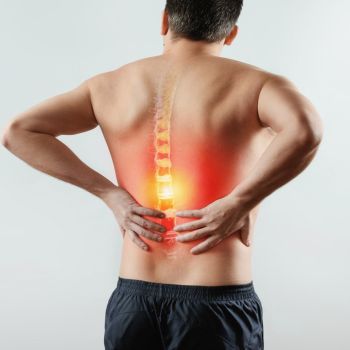
- Running and Jumping: These activities can stress the spine, worsening facet joint pain.
- Heavy Lifting: Lifting heavy objects can strain the back and aggravate symptoms.
Do Not Ignore Pain
- Delaying Treatment: Ignoring pain can lead to more severe issues. Early intervention by a Spinal Surgery in New York can prevent further damage.
- Overuse of Painkillers: Relying solely on painkillers without addressing the underlying issue can be detrimental.
Avoid Poor Posture
- Slouching: Poor posture can increase the stress on facet joints, exacerbating pain.
- Incorrect Sitting Posture: Ensure ergonomic seating to reduce spine stress.
Refrain from Self-Diagnosis and Treatment
- Unverified Remedies: Avoid trying unproven treatments without consulting a spine specialist New York.
- Skipping Professional Advice: Self-diagnosis can lead to incorrect treatments. Always seek professional medical advice.
Consult Us For Spinal Surgery in New York
- Professional Evaluation: Dr. Han Jo Kim, a spine specialist New York, can provide an accurate diagnosis and treatment plan.
- Tailored Treatment: Personalized care ensures the best outcomes for managing facet arthropathy.
Engage in Low-Impact Exercises
- Swimming: This exercise minimizes spine stress while improving fitness.
- Walking: A gentle way to stay active without aggravating the condition.
Maintain Good Posture
- Ergonomic Adjustments: Use supportive chairs and proper techniques when sitting and standing.
- Core Strengthening: Strengthen core muscles to support the spine.
Follow a Treatment Plan
- Physical Therapy: Engaging in physical therapy under professional guidance can help manage symptoms effectively.
- Medication Management: Use prescribed medications as directed by a spine specialist in NY.
Consult Dr. Kim For Spinal Surgery in New York
Managing facet arthropathy effectively requires avoiding activities that can worsen the condition and adopting best practices for spine health. For expert guidance and a tailored treatment plan, consult Dr. Han Jo Kim, a leading spine specialist NY. Prioritize your spine health by seeking professional advice and following a comprehensive management strategy.
